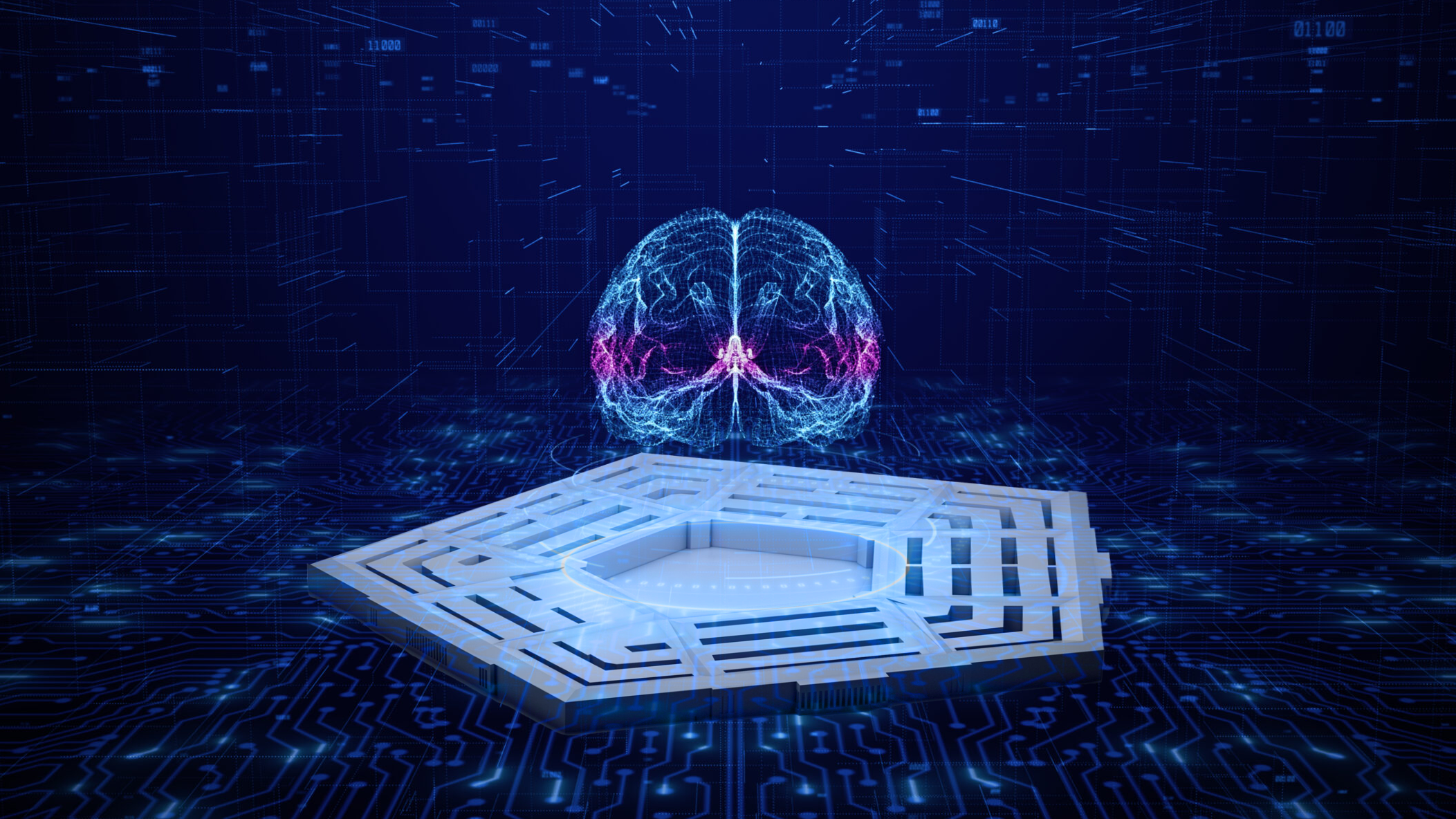
Pentagon grapples with growth of artificial intelligence. (Graphic by Breaking Defense, original brain graphic via Getty)
The terms “artificial intelligence” and “machine learning” have been bandied about for years, each meaning one thing or another to different people, and often used interchangeably as almost one word. If there’s anyone who should know the difference, though, it’s Pedro Rodriguez, who has spent two decades at Johns Hopkins Applied Physics Laboratory (APL) and is the rare person with titles in both AI and ML.
Rodriguez helped explain the differences between AI/ML and why it matters as part of a recent Breaking Defense webinar that focused on the here-and-now applicability of AI/ML tools as opposed to future potentialities for the technology. He was joined by Andrew Pepler, senior strategy and policy analyst in the office of the Chief Digital and Artificial Intelligence Officer; and Vivek Chilukuri, senior fellow and director of the Technology and National Security Program at the Center for a New American Security.
The webinar, which is now available on-demand, kicked off with Rodriguez saying AI is best described as a machine-based system that can make predictions, recommendations, or decisions influencing real or virtual environments — in other words, formulating ideas, options, and actions.
But AI really can be defined in many ways, which is why “I prefer machine learning, which in a Venn diagram is a subset of AI, because it has a clear definition. Machine learning is data-driven approaches that allow computers to learn from data without being explicitly programmed,” said Rodriguez, principal AI technical leader at APL.
Machine learning has existed for half a century, Rodriguez noted, but most of that time was dominated by finding ways to transfer or program human knowledge into machines. This latest AI boom, however, differs in that it’s being driven by deep learning where computers are fed the proverbial kitchen sink of data and imagery — the Large Learning Models we hear about — and then they’re expected on their own to divine the salient patterns of those data inputs.
Amongst other topics, Peppler, the lead author on the DoD’s recently released Data Analytics and AI Adoption Strategy, and Chilukuri, until lately a senior staff member for Sen. Michael Bennet, D-Colo., discussed: where AI is already gaining traction, such as in the drive to organize data so it can be exposed to analysts and AI models; how it’s possible to test and evaluate AI when it’s shown an ability to transmogrify; and how AI can be properly regulated when many in Congress already struggle to understand the impacts of social media or cryptocurrency.
The full three-way free, on-demand webinar can be found here.









